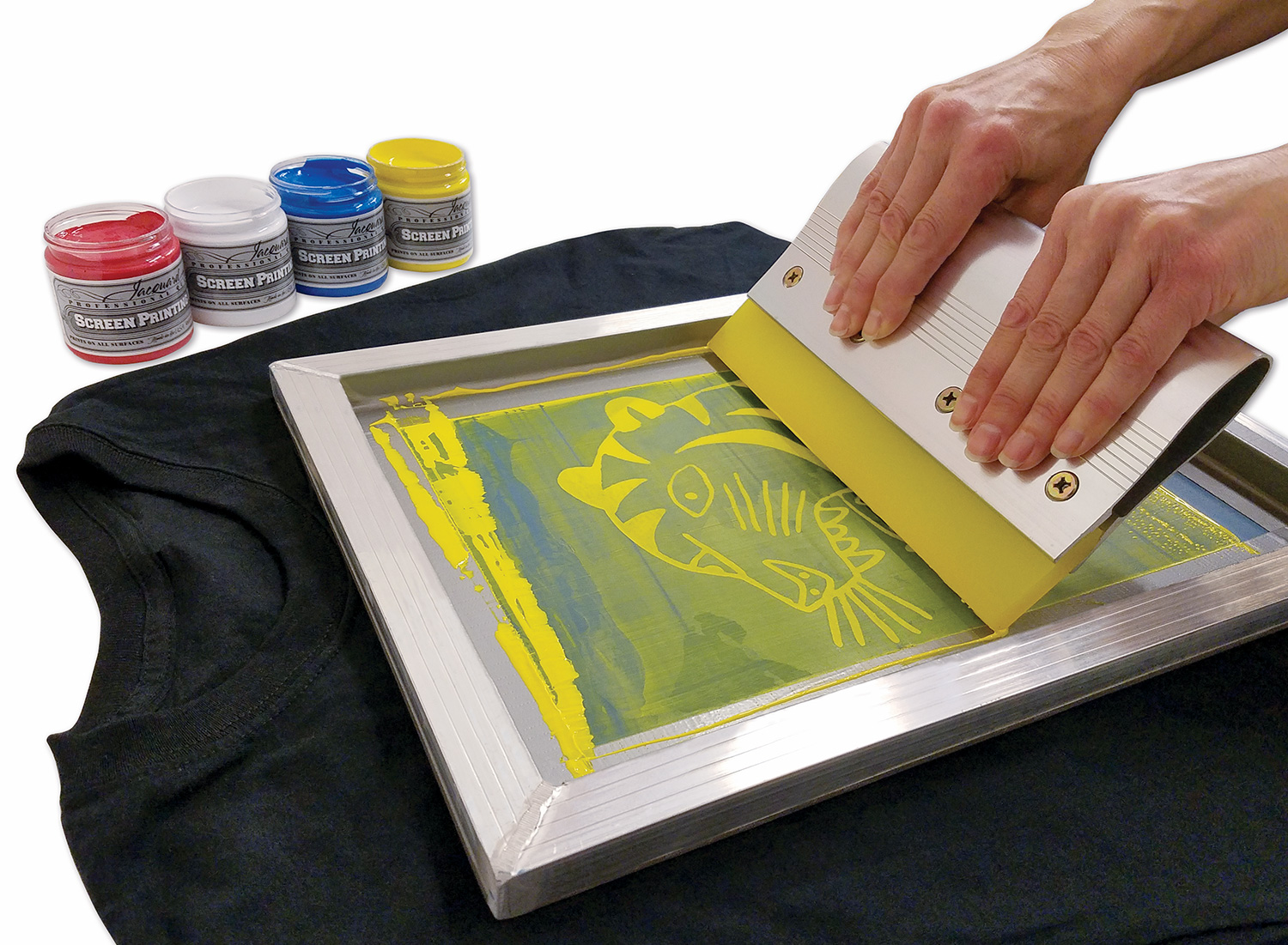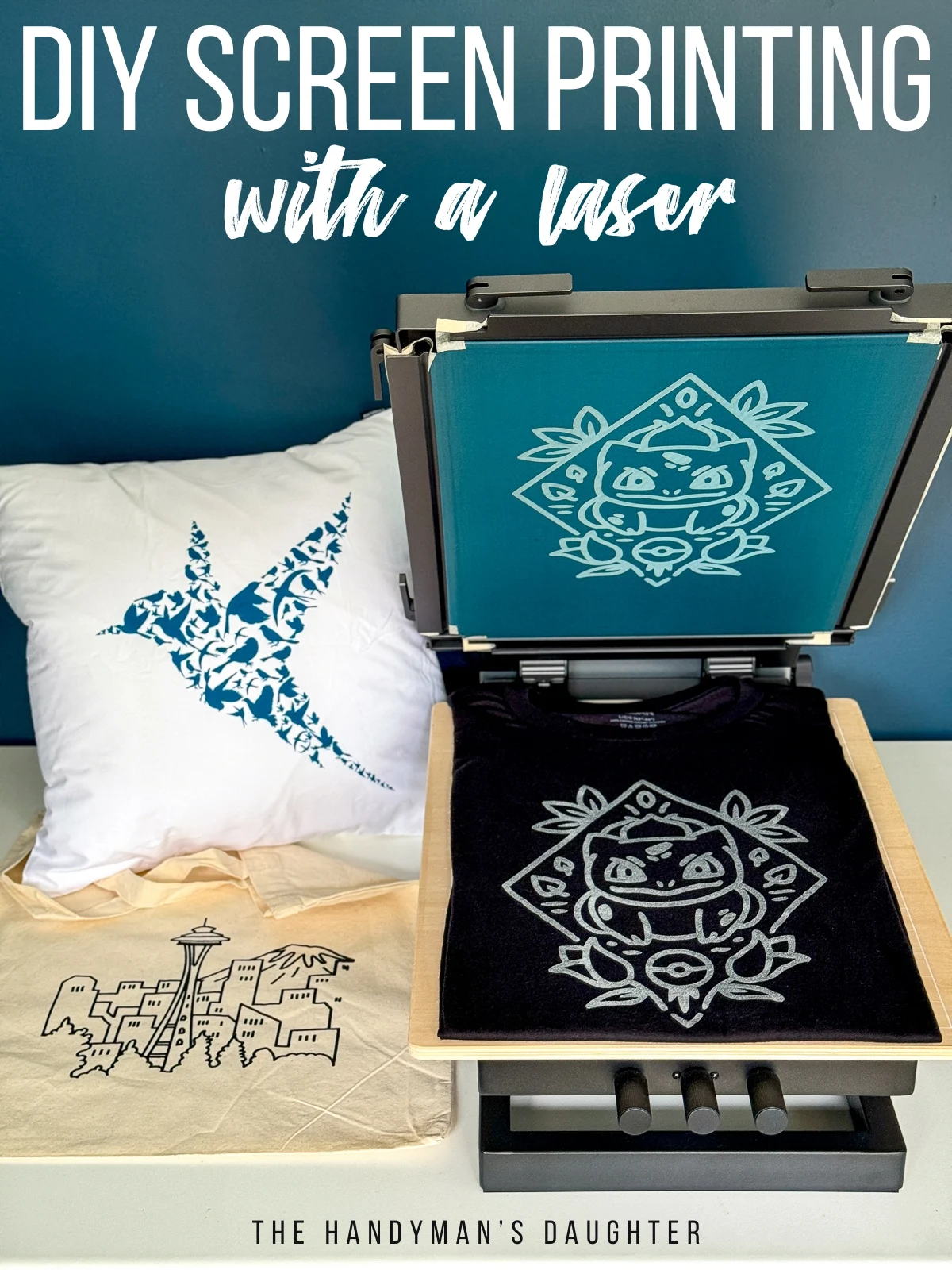Discover the Numerous Kinds Of Screen Printing Techniques for Your Next Project
Screen printing offers a varied range of techniques that can boost any imaginative job. From conventional techniques like serigraphy to modern innovations such as direct-to-garment printing, each method has its distinct benefits. Specialized alternatives, including green and metal inks, introduce also extra possibilities. Recognizing these methods can substantially affect the final end result. The obstacle lies in choosing the most ideal method for details demands and wanted effects. What factors should one take into consideration?

The Fundamentals of Screen Printing
Although screen printing may seem complicated, it is essentially a straightforward procedure that entails moving ink via a mesh screen onto numerous surface areas. The method begins with the development of a stencil, which specifies the style to be published. This pattern is affixed to a mesh screen, usually constructed from polyester or nylon. Once the pattern remains in place, ink is applied to the screen and pushed through the mesh making use of a squeegee, resulting in the preferred pattern being printed on the underlying product.
Screen printing can be done on a vast array of substrates, consisting of textile, paper, and plastic, making it a flexible selection for different projects. The procedure permits vibrant colors and complex layouts, making it popular in markets such as marketing, art, and fashion. Recognizing these basics furnishes people with the foundational understanding needed to explore advanced techniques in screen printing.
Traditional Screen Printing Techniques
Standard screen printing strategies have actually been employed for centuries, protecting the craftsmanship and virtuosity of this technique. This technique uses a mesh screen to transfer ink onto a substrate, such as textile or paper, permitting resilient and lively styles. The procedure starts with developing a pattern, which obstructs specific areas of the screen to regulate where the ink will be used.
One preferred strategy is serigraphy, usually made use of for limited editions and artistic prints. One more is using water-based inks, which are green and provide a soft feeling on textiles - 10:9 Design Company. In addition, typical methods can consist of hand-operated printing, where artisans apply ink with a squeegee, guaranteeing precision and attention to information
These techniques continue to be valued in the market for their tactile top quality and the one-of-a-kind textures they produce, appealing to both consumers and designers that value the heritage of screen printing.
Digital Screen Printing Innovations
As the demand for faster production and modification in the printing market has risen, digital screen printing technologies have actually become a game-changer. This modern technology mixes typical screen printing techniques with electronic procedures, permitting quick prototyping and detailed layouts that were formerly challenging to accomplish. One considerable development is the introduction of direct-to-garment (DTG) printing, which helps with high-grade, full-color prints on various textiles without the need for displays. In addition, advancements in ink formulas have led to environmentally friendly options that maintain vivid shades while reducing ecological influence. Using automated systems even more enhances manufacturing, lowering labor prices and enhancing precision. These technologies not only cater to small set orders and personalized designs however likewise enable quicker turnaround times, making them excellent for organizations concentrated on conference customer demands in a hectic market. Digital screen printing, as a result, represents a crucial advancement in the domain name of printing methods.
Specialty Screen Printing Techniques
Checking out specialized screen printing methods exposes a varied selection of methods that press the limits of creativity and capability in the printing industry. Amongst these, glow-in-the-dark inks offer a distinct aesthetic effect, making layouts come active in low-light problems. Metallic inks, recognized for their glittering finish, include a touch of high-end to printed materials. One more innovative approach is discharge printing, which gets rid of color from the material as opposed to adding ink, leading to a soft, vintage feel. High-density printing develops a raised texture on the surface, boosting responsive engagement. In addition, water-based inks are gaining popularity for their vivid colors and minimized ecological effect. Each of these specialty strategies accommodates particular layout needs, allowing brands and musicians to develop standout products that resonate with their target markets. By leveraging these methods, businesses can elevate their screen printing projects to new elevations, guaranteeing unforgettable perceptions.
Eco-Friendly Screen Printing Options
Environmentally friendly screen printing choices are obtaining grip as the industry shifts towards sustainability. Lasting ink choices and using eco-friendly products are crucial components in decreasing the environmental impact of the printing process. By embracing these techniques, screen printers can add to a more lasting future while keeping high-quality outcomes.
Sustainable Ink Selections

Biodegradable Materials Usage
As the screen printing industry progresses, the incorporation of naturally degradable products is becoming significantly vital for environmentally conscious practices. Developers and manufacturers are now checking out inks and substratums made from all-natural, renewable sources that break down much more successfully than standard counterparts. These naturally degradable options decrease plastic waste and reduce environmental influence, aligning with the growing demand for sustainable items.
Usual examples consist of water-based inks and natural cotton textiles, both of which minimize harmful chemicals and promote eco-friendliness. Brand names that adopt these materials commonly boost their market allure, drawing in customers that prioritize sustainability. As awareness of ecological problems proceeds to rise, the shift towards naturally degradable products in screen printing is likely to obtain energy, cultivating a greener market criterion.
Choosing the Right Method for Your Job
Exactly how can one figure out the most ideal screen printing method for a details project? The choice pivots on a number of factors, consisting of the material to be published on, the intricacy of the design, and the desired production quantity - 10:9 Design Screen Printing. Direct-to-garment printing is excellent for complex layouts with various shades, while traditional screen printing excels for larger runs of simpler graphics.
Additionally, consideration of the end-use of the printed product is vital. For outside applications, techniques that offer sturdiness and weather resistance, such as plastisol ink, may be favored. Alternatively, environmentally-conscious jobs might gain from biodegradable products or water-based inks.
Inevitably, recognizing the task's special demands allows for an enlightened selection, ensuring both aesthetic allure and functional long life. By evaluating layout complexity, product compatibility, and production scale, one can effectively pick one of the most proper screen printing technique to fulfill their task's goals.
Often Asked Questions
What Is the History of Screen Printing?
Screen printing came from in ancient China around 1000 ADVERTISEMENT, evolving via Japan and more info Europe. By the 20th century, it came to be popular in industrial art and fashion, transforming just how styles were produced and distributed globally.

Exactly how Do I Prepare Art Work for Screen Printing?
To prepare artwork for screen printing, one have to ensure high resolution, use an appropriate color mode, develop different layers for each color, and transform message to outlines, assuring compatibility with the printing process and desired outcome.
What Materials Are Ideal for Screen Printing?
The most effective materials for screen printing consist of high-quality inks, sturdy displays, and suitable substratums like cotton, polyester, or blends. In addition, making use of appropriate solution and squeegees can improve the printing procedure and results.
Can I Evaluate Print in your home?
Yes, screen printing at home is feasible. With the appropriate products, setup, and methods, people can produce high-quality prints. Mindful consideration of office and equipment is necessary for successful outcomes.
What Are Typical Mistakes in Screen Printing?
Common blunders in screen printing include improper direct exposure times, insufficient ink uniformity, misalignment of screens, insufficient cleaning of materials, and ignoring to test prints. These mistakes can jeopardize the top quality and precision of the end product.
Screen printing might appear facility, it is basically an uncomplicated procedure that includes transferring ink via a mesh screen onto various surface areas. As the demand for faster production and customization in the printing sector has risen, digital screen printing technologies have emerged as a game-changer. Exploring specialty screen printing approaches exposes a varied array of methods that push the borders of imagination and performance in the printing market. The finest products for screen printing consist of top notch inks, durable displays, and ideal substratums like cotton, polyester, or blends (10:9 Design near me). Common mistakes in screen printing consist of inappropriate exposure times, insufficient ink consistency, misalignment of screens, inadequate cleansing of materials, and disregarding to evaluate prints